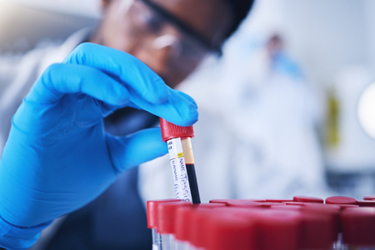AI-Powered Raman Spectroscopy Revolutionizes Drug Detection In Blood

By John Oncea, Editor

Scientists discovered a method for detecting cardiovascular drugs in blood that provides a rapid and precise analysis technique with significant potential for real-time clinical diagnostics.
Accurately monitoring drug concentrations in blood is critical for effective treatment, particularly for cardiovascular diseases. Traditional methods like liquid chromatography (LC) and mass spectrometry (MS) require complex sample preparation and laboratory settings, limiting their efficiency in clinical practice.
Now, a groundbreaking method developed by researchers from Finland’s University of Oulu and Harbin Medical University in China shows promise in improving the process of detecting cardiovascular drugs in blood by combining surface-enhanced Raman spectroscopy (SERS) with artificial intelligence (AI). The newly developed SERS-based platform offers an alternative by providing a rapid, highly sensitive, and selective means of detecting drugs in blood, with potential implications for personalized medicine.
This innovative approach, detailed in the journal Biosensors and Bioelectronics, offers rapid, precise, and highly sensitive drug detection, potentially transforming real-time clinical diagnostics and personalized medicine.
The Technology: Molecular Hooks And AI Integration
The core of this breakthrough lies in the use of molecular hooks – self-assembled silver nanoparticles functionalized with a molecule called A13. According to Spectroscopy Online, these hooks selectively capture small drug molecules while excluding larger biomolecules like hemoglobin. This specificity ensures precise detection even in complex biological samples such as blood.
The method also leverages AI to enhance spectral analysis, adds the National Library of Medicine. By automating the interpretation of Raman spectra, the AI component eliminates human error and accelerates the detection process. This integration of SERS with AI amplifies sensitivity and accuracy, enabling the detection of drug concentrations as low as 10 pg/mL for dobutamine hydrochloride and 10 ng/mL for milrinone – levels significantly below therapeutic thresholds.
To further improve sensitivity, the researchers introduced calcium ions to aggregate the nanoparticles, creating dense electromagnetic hotspots. These hotspots amplify Raman signals, making it possible to detect even trace amounts of drugs. This enhancement is critical for ensuring that the method remains effective across a wide range of clinical applications.
Experimental Validation, Clinical Implications, Future Applications
The research team validated their platform using advanced characterization techniques such as transmission electron microscopy (TEM), scanning electron microscopy (SEM), and X-ray diffraction (XRD). These tests confirmed the uniformity and stability of the nanoparticles, which maintained high SERS activity for at least five days. Additionally, comparative studies demonstrated that this method outperformed conventional techniques in both sensitivity and selectivity.
In practical experiments, the platform successfully distinguished dobutamine hydrochloride from other compounds in blood samples, providing clear Raman fingerprints. This precision underscores its potential for real-world clinical applications.
This development holds significant promise for personalized medicine. By enabling real-time monitoring of drug levels, clinicians can tailor treatments more effectively, reducing risks associated with under- or overdosing. This is particularly crucial for patients with cardiovascular conditions, where drug efficacy is highly dependent on individual metabolic differences.
Beyond cardiovascular drugs, this SERS-AI approach could be extended to detect other therapeutic agents such as antibiotics, chemotherapy drugs, and psychiatric medications. The technology also has potential applications in diagnostic testing for various diseases. Future research will focus on expanding the range of detectable substances and refining AI models to further enhance accuracy.
A Paradigm Shift In Clinical Diagnostics
The integration of SERS with molecular hook technology and AI represents a change in thinking in drug monitoring and clinical diagnostics. By offering a rapid, precise, and minimally invasive method for detecting drugs in blood, this innovation could revolutionize patient care. It paves the way for more effective treatment strategies tailored to individual needs – a cornerstone of modern personalized medicine.
As this technology evolves, its applications are likely to expand into broader areas of healthcare, including toxicology and forensic analysis. The ability to detect drugs quickly and accurately in complex biological matrices positions this method as a valuable tool for both clinical practice and research.
The combination of surface-enhanced Raman spectroscopy with artificial intelligence and "molecular hooks" offers a promising new method for the rapid detection of cardiovascular drugs in blood. This innovative approach has the potential to revolutionize clinical diagnostics and personalized medicine, leading to improved patient outcomes.
